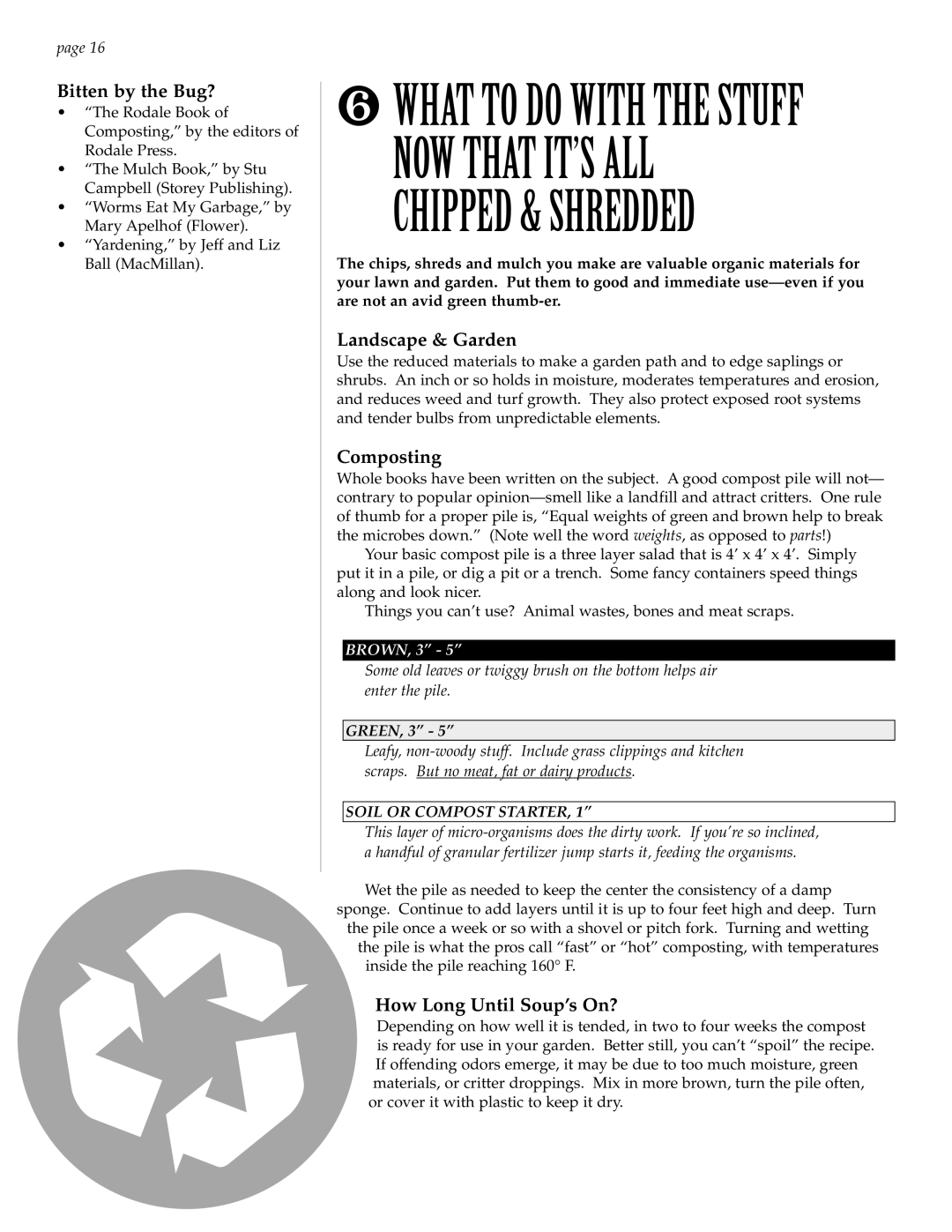10F-CSV specifications
The Patriot Products 10F-CSV is a robust and efficient chipper shredder designed to tackle the needs of both homeowners and professionals looking for reliable yard maintenance solutions. This powerful machine is engineered to handle a variety of tasks, making it an invaluable asset for anyone who takes pride in their outdoor spaces.One of the standout features of the 10F-CSV is its powerful 14 HP engine, providing ample power to process branches and yard debris up to 3 inches in diameter. This formidable engine allows for quick and efficient chipping, ensuring that your yard cleanup remains swift and hassle-free. The engine is also designed for easy starting, allowing users to get to work without any unnecessary delays.
The 10F-CSV boasts a unique design that combines innovative technology with user-friendly features. One such feature is its dual shredding system, which effectively reduces debris to a fine mulch. This capability is especially useful for composting or creating natural ground cover, promoting healthier soil and reducing cleanup time.
Mobility is an essential characteristic of the 10F-CSV. With its heavy-duty, solid wheels, the machine is easy to maneuver across various terrains, making it suitable for diverse landscaping needs. Additionally, the inclusion of a tow hitch allows users to transport the chipper effortlessly behind a vehicle, perfect for large properties or professional landscaping jobs.
Safety is a key focus in the design of the Patriot Products 10F-CSV. The machine is equipped with features such as a safety stop mechanism, which halts the engine when the hopper is opened. This prevents accidental injuries and ensures user safety during operation. Furthermore, the chipper is constructed with durable materials, guaranteeing that it can withstand the rigors of heavy use while requiring minimal maintenance.
In summary, the Patriot Products 10F-CSV is a powerful and versatile chipper shredder that combines performance, durability, and safety in one compact unit. With a strong engine, dual shredding ability, and easy mobility, it’s an ideal tool for anyone looking to maintain a pristine outdoor environment. Whether you're a homeowner looking to tidy up your yard or a landscaping professional seeking reliable equipment, the 10F-CSV is designed to meet your needs efficiently.

